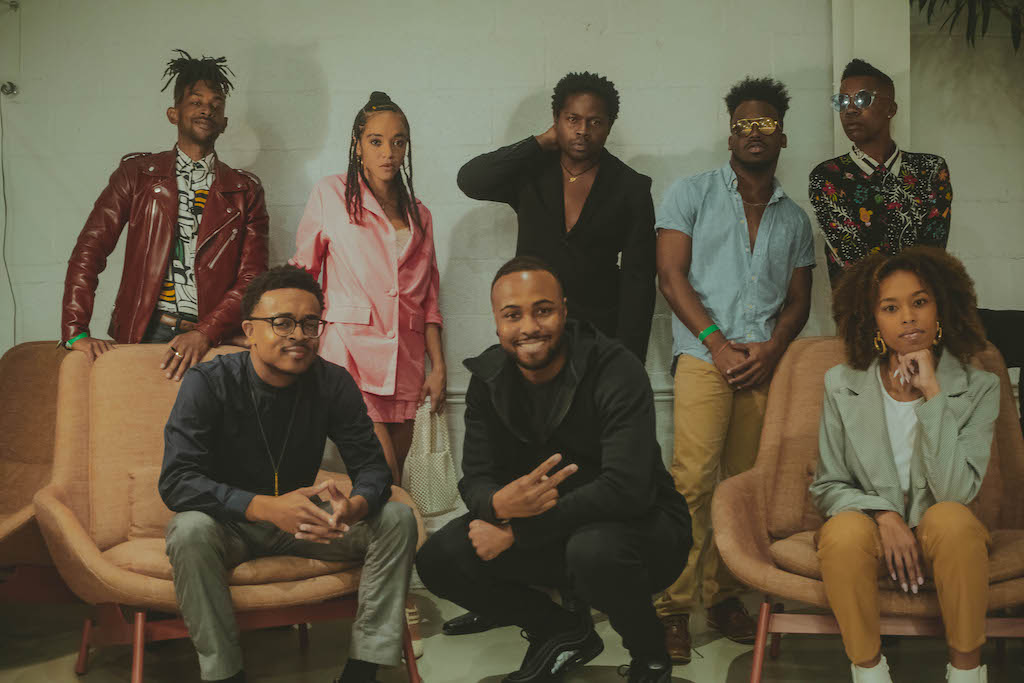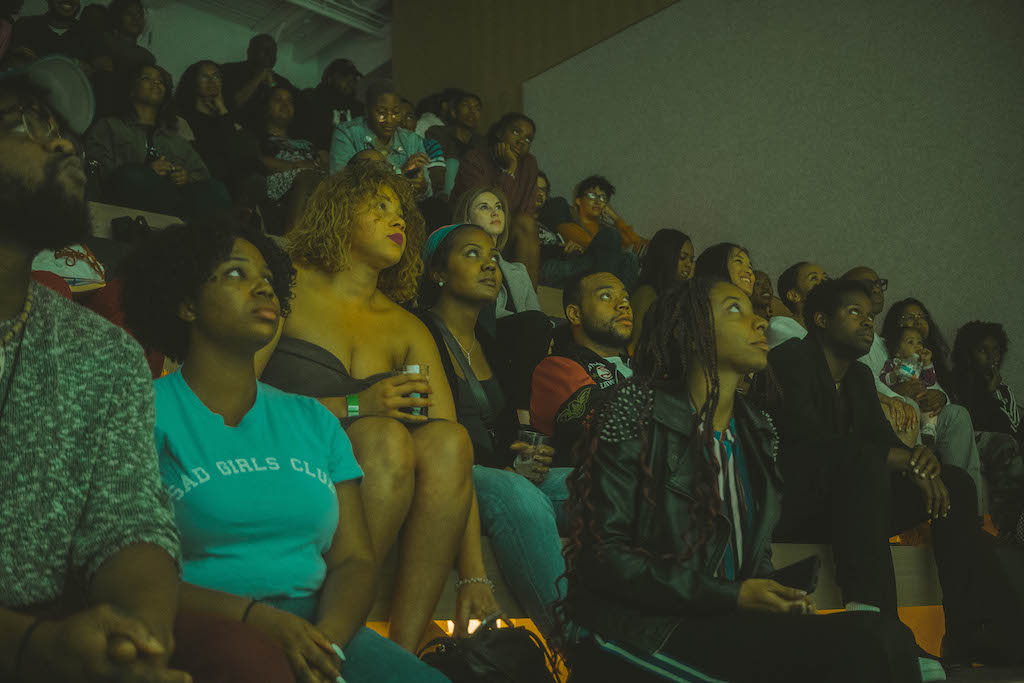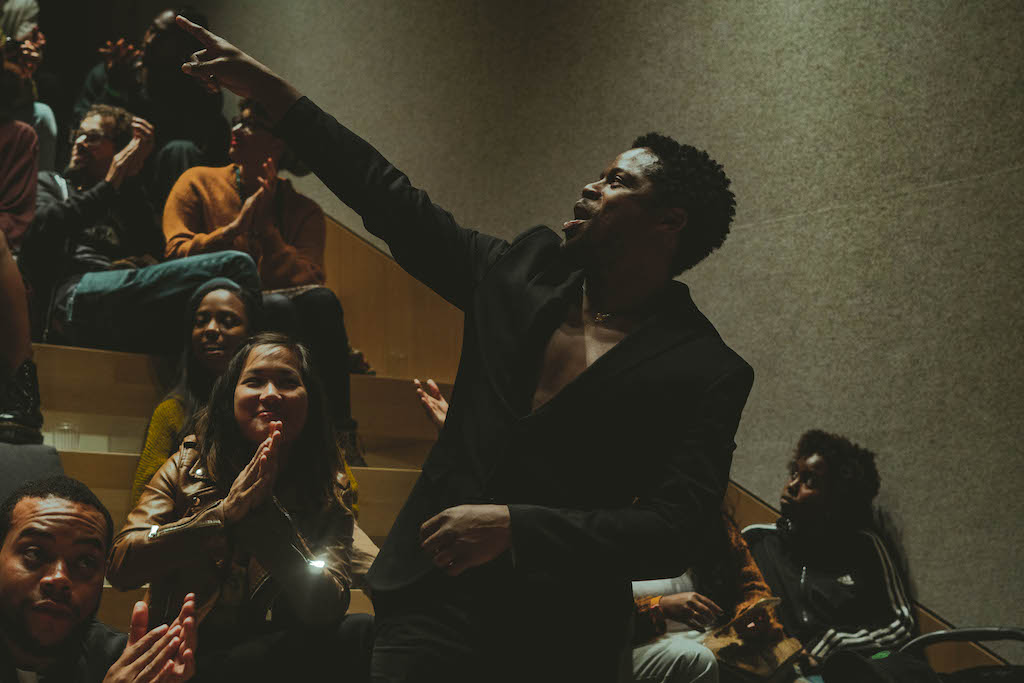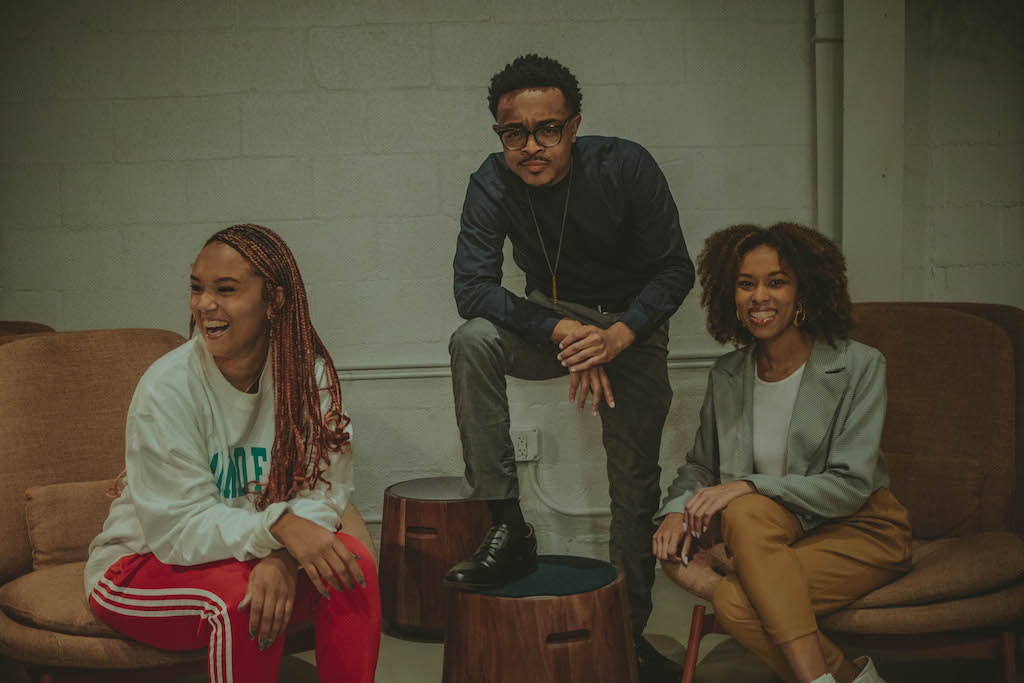Only one in three black people who need mental health care receive it, the YouTube series/activist group “Sad Ass Black Folk” is calling on their community to change that.
Group therapy is described in many different ways by the characters on the L.A.-based YouTube series “Sad Ass Black Folk.”
“Might be good for you.”
“I’m not going, you might be interested.”
“This’d be dope for the community. I think South L.A. needs more stuff like it, you know? Break the rules. Grab life by the booty.”
Conversations around mental health have grown in black communities over the past few years, thanks in part to online resources like Therapy for Black Girls and TV shows showcasing black characters seeking out therapists, such as “Insecure,” “Black-ish” and “Dear White People.” But a stigma around mental health remains. It’s worth noting that according to the American Psychiatric Association, black people are more likely to experience feelings of helplessness and worthlessness compared to white people. However, only one in three black people who need mental health care receive it.
This is why local filmmakers Joel Boyd and Neima Patterson are making an effort to bring representation and information on mental health care to South L.A. through the “Sad Ass Black Folk” web series, along with live community-driven events.
The web series, which premiered in November 2019, centers on eight South L.A. residents in group therapy who have nothing in common besides being black. The issues that come up over the series’ eight episodes include dealing with anger and depression, being misidentified by those close to you, coping with life changes and creating boundaries with overbearing parents.
“One of the ideas that we expanded on when we wrote the characters was just, blackness isn’t a monolith,” Boyd says. “What I really loved about writing the characters was [showing] a sector of blackness that I know as my friends, but I haven’t really seen on TV or in movies. So when we wrote the characters, we were like, ‘OK, who do you really know?’ [We thought] about people that just aren’t being represented like the nonbinary black community, the LGBTQIA black community. I think when you look at the characters, especially as a young, black 20-something watching the show, you should feel like, ‘Oh, I know that person. Oh, that is a literal struggle that I’m having and my friends are having.’”

For Patterson, who grew up in South L.A., it was especially important to show the parts of Los Angeles that aren’t often highlighted in entertainment. “I was more so concerned about the Los Angeles that I know, what I call ‘Black Los Angeles.’ I wanted to kind of dedicate it to the black people that are here because if you need help, [it’s] very hard to find a black therapist in Los Angeles. There’s a lot of work that needs to be done because of all communities, I don’t think the black community is a priority.”
One of the show’s mental health consultants, Erica Gissentanner-Bush, says the show has the potential to start a conversation. “I thought it was a great idea … You can get something educational even if it’s in a form of comedy,” she says. “I wanted to give my input.”

The show’s depiction of therapy is also unique in that none of the characters have a diagnosis assigned to them. Through the group therapy sessions, the characters on “Sad Ass Black Folk” end up learning how to handle feelings of anger or sadness or frustration. In that way, therapy seems universal and accessible to nearly anyone.
“The stigmas around the black community as far as mental health is that, ‘Oh, you’re crazy’ [if you seek therapy],” Gissentanner-Bush says. “But on the other hand, you have white people that have been in therapy forever and it’s common to them, but they were able to afford it.” She says that it’s important to portray to the community that mental illness is not a myth, and individuals aren’t “crazy” for seeking help or medication.
Actress Jil Chrissie, who portrays one of the eight central characters in “Sad Ass Black Folk,” is excited for the show to start conversations about therapy in the black community. “Just talking about it can lead to a lot of change because then people have the information,” Chrissie says.

Boyd and Patterson’s goal is to facilitate open and honest communication about mental health by sparking a social media movement with the hashtag #CheckOnYourPeople, to remind viewers to check in with their friends and family.
“It was something that we did with each other while we were making the show, that I try to do with my roommate and my family who lives across the country that I don’t see often enough,” Boyd says.
They have also hosted events that combine screenings of the show with talks featuring mental health activists as well as wellness programming like yoga for mindfulness and improv for social anxiety.
“I think another underlying goal that I feel like we helped to succeed with was just for us to be able to be more open and honest with each other,” Boyd says.

